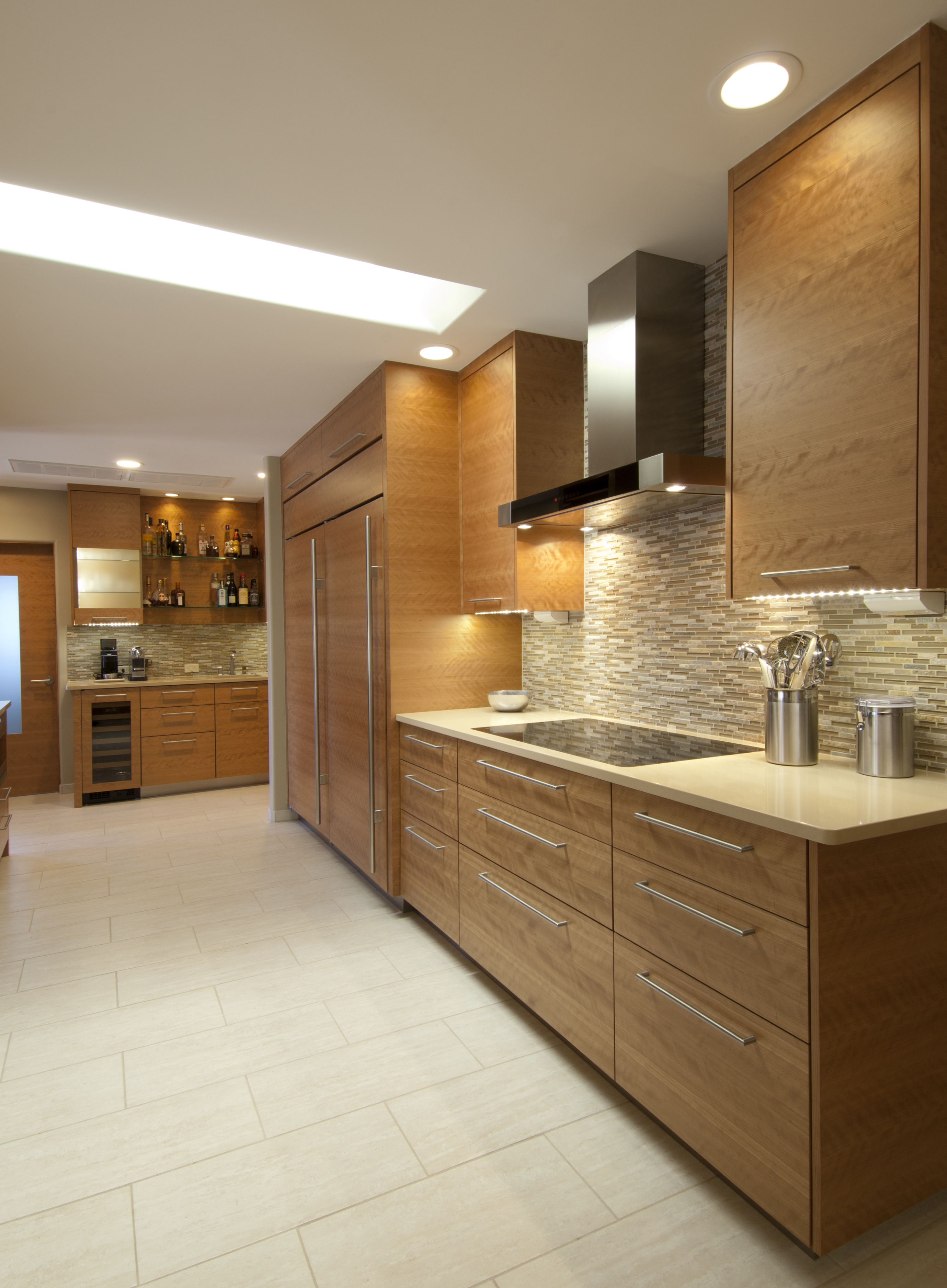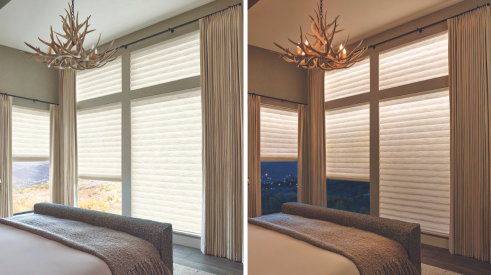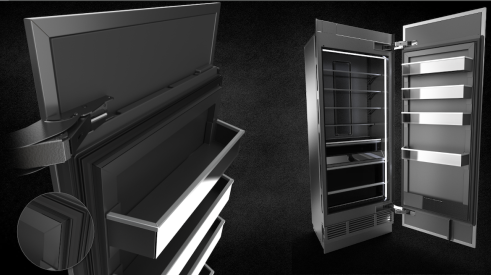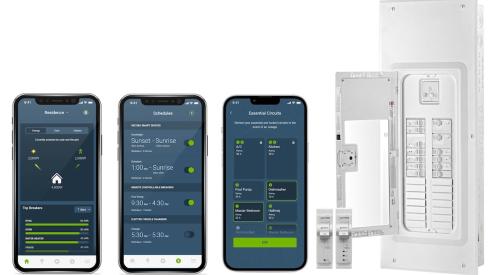A key element of cabinet specification is to define the specific storage components planned behind the door and drawer fronts. As noted in the Kitchen Planning volume of the “NKBA Professional Resource Library,” kitchen planning has been studied for the last 150 years.
Recently, a major manufacturer continued this endeavor by identifying specific items maintained in a kitchen and studying the path of the cook as they worked in the space. This information is helpful when considering the options for an interior storage system and placing these items within cabinet interiors.
The storage requirement for a specific kitchen is based on the client’s collection of point-of-use countertop appliances, shopping habits, size of household, and lifestyle. Based on the survey, on average, 360 individual activities occur each day in the kitchen. These activities include simple motions, such as removing a vegetable peeler from a drawer, peeling at the table and taking the peelings to the trash container, and finding a pot and lid to cook the vegetable. Over the course of 20 years, this amounts to approximately 2.6 million activities in the kitchen. Because items need to be accessed during many of these activities, placing them in their proper kitchen zone so they can be retrieved as quickly and easily as possible will help reduce work time and the physical effort required to complete kitchen tasks.
Motion economy
To add value to your solution and the cabinets you specify, remember the long-standing time management principles as they relate to motion economy. Simply put, saving motion during any activity not only means saving the human worker energy; it also means saving the person’s time. Time is one of our most valuable commodities today; indeed, for many people, it is priceless.
Work simplification principles
Be cognizant of the value of energy management. Each person has a finite amount of energy, depending on physical heritage, age, and general health. You can minimize the effort needed to cook in the new kitchen if you are familiar with the research and ask the right questions when you first interview your client.
As you interview your client and review the space under development, remember that household tasks require several types and combinations of efforts:
- Mental effort to think through the task
- Visual effort as the eye directs the movements of the body
- Manual effort as the person reaches, lifts, carries, pulls, and pushes objects as part of the task
- Upper body strength and mobility required for bending, leaning, rising, turning, and stooping
- Pedal effort to walk, move, and stand
Designers can help their clients minimize the motion needed by employing four basic techniques.
- Eliminate unnecessary work. By incorporating interior storage aids, no energy is needed to search, remove, and/or replace objects in the cabinet interior.
- Combine operations of elements. Thinking through the sequences family members follow when using the kitchen will lead to a plan based on a logical, fluid path for the primary cook to follow.
- Change the sequence of an operation. By carefully monitoring the food/equipment flow, storage/preparation/cook/usage steps can be minimized.
- Simplify the necessary operations. Any plan enhancement that can simplify the operation at hand will save energy. Locating non-cooking–related activities along the perimeter of the cook’s central workstations simplifies the cooking operation.
How high can the average cook reach? How much counter space does the cook use? It is also useful to be familiar with research projects that identify functional limits of reach, and the typical cook’s work curve.
Functional limits Cornell University studied shoulder-to-grasping, fingertip reach of individuals 5 foot 3 inches to 5 foot 7 inches, and established 79.6 inch as the highest comfortable overhead reach for these cooks. When the reach was over a 25-inch-deep counter surface, the top shelf height was lowered to 69 inches. In the same manner, 48 inches was set as the comfortable side-to-side reach and 24 inches off the floor was set as the lowest point or fingertip level from the floor. This is excellent information to use when thinking about uninterrupted counter space or how and where wall cabinets or other types of above-countertop storage units might be located.
Work curve The same study determined the normal work curve (or elbow circle) had a maximum depth of 16 inches. This is why the average countertop height, 25 inches, provides plenty of room for spreading out supplies or stacking plates in front of the user. This is also a very important measurement when designers are considering new and unique backsplash storage system solutions.
Storage guidelines
When planning a kitchen, the designer must consider the homemaker’s available time and energy level. These guiding principles should be followed:
Build the cabinets to fit the cook. Build the shelves to fit the supplies. Finally, build the kitchen to fit the family.
Storage guidelines are based on three basic tenets:
- Store supplies at their center of use
- Ensure all supplies are clearly visible
- Ensure all supplies are easily accessible
To accomplish this, storage specialists suggest:
- Store items at the first or last place of use
- Store items in multiple locations if used for different tasks
- Store items that are used together in the same location
- Store items so they are easy to locate at a glance
- Store or group together like articles
- Store frequently used items within easy reach. (Based on research, “easy reach” is defined as between eye level and hip level at the front of the cabinet’s shelf, or placed anywhere within the confines of a pullout or rollout shelf)
- Store items so they are easy to grasp at point of storage
- Store items so they are easily removed when removing other items first
- Place heavy equipment at or near floor level
Utilize all space for utmost efficiency. Share these principles with your clients before you complete the storage system layout and then remind them about these basic principles, which will guide them in organizing the kitchen (or bath) cabinetry after the installation is complete.
Planning cabinet system based on zones
New studies continue to focus on the need for designers to create a dynamic space, one that supports the cook’s efforts by minimizing his or her physical exertion while producing a meal or completing other activities in a residential kitchen.
The key components of the dynamic space concept are to:
- Reduce the stress placed on the body, thus making it easier to work in
- Shorten the distance traveled and time spent through proper zone planning
Research resulted in an observation there were more than 100 zone changes per day in the kitchen of an average four-person household (an average based on the variety of household demographics and cooking habits). This survey is briefly referenced in the Kitchen Planning volume of the “NKBA Professional Resource Library.”
The following information is an excellent foundation for specifying a cabinet interior storage system.
On an average daily basis:
- People make 30 trips to and from some type of seated, dining, and/or gathering area
- Fifty separate activities are performed within the individual zone
- Appliances are used 30 times
- Doors and drawers opened and closed over 80 times
A comparison of traditional planned kitchens was made compared to those planned in accordance with the dynamic space concept using the string study method. To identify a work pattern, string is attached to the worker’s body. At the end of the day; the length of string is measured to establish the distance covered. After a typical day in a kitchen that had been carefully zoned based on anticipated activity, the total footsteps were reduced by as much as 25 percent, saving distance traveled, and time spent in the kitchen.
Kitchen zones
Consumables zone Items in the consumables zone consist of anything that is eaten and needs to be replenished. The refrigerator is a part of this zone because both perishable and nonperishable items are stored here.
Nonconsumables zone The nonconsumable zone contains items such as dishes, cutlery, glassware, plastic containers and their lids, jugs and pitchers, and a few small appliances.
Cleaning zone Items found in the cleaning zone are centered on the sink. Cleaning agents, sponges, dish detergents, and cleaning utensils are stored here. Space should also be planning for the trash can and recycling containers.
Preparation zone The preparation zone holds items used during meal preparation. The storage items in this zone require an assortment of drawer depths. Shallow spaces are needed for utensils, while deeper drawers are required for appliances, mixing bowls, pots and pans, and enclosed containers storing food-related ingredients or products.
Cooking zone The items in the cooking zone are needed close at hand. Centered on the cooktop, oven, and microwave, the area requires the storage of oven mitts to move pots, pans, baking dishes, and cookie sheets from the heat.
Based on this information, the cabinets themselves and their interior storage systems should be organized following these four key points:
- Consider cabinet sizes based on the five kitchen zones identified
- Choose cabinets with ergonomic benefits to support the activities associated in each of these zones
- Create optimal access into the cabinet specified
- Organize the contents of the cabinet. PR
--
This article is excerpted from the NKBA Professional Resource Library volume: Kitchen & Bath Products and Materials, Second Edition by Ellen Cheever, CMKBD, ASID, CAPS to be published John Wiley & Sons Inc. in 2014. Copyright: National Kitchen & Bath Association. This material is reproduced with the permission of John Wiley & Sons Inc.
Recently, a major manufacturer studied the path of the cook as they worked in the space. The information is helpful when considering the options for a storage system and placing items within cabinet interiors.
Add new comment
Related Stories
Pro's Picks: A Quick Install Composite Stone
This pro completed a high volume facelift project months ahead of schedule
Pella's New Debut Promises Faster, One-Person Window Installs
The window manufacturer promises 3.15x faster installation with its Steady Set system
Marvin Releases Switchable Privacy Glass Window
The privacy glass windows can be purchased from Marvin's Direct Glaze windows
Innovative Products: Window Shades That Create Natural Light
Wait, shouldn't window shades keep light out?
New Insulation Innovation Reshapes Our Thinking of Refrigeration
Whirlpool Corporation's latest innovation allows refrigerators to do more and be more
Innovative Products: A Whole-Home Energy Monitoring System
Homeowners can control their lighting, load control, and EV charging through one app
Pro's Picks: A Paperless Note-Taking Tablet
This remodeler recommends a tablet that makes note-taking and document organization easier
Building Materials Show Stability in 2023
Although supply chain bottlenecks have eased in recent months, shortages of some key materials persist.













